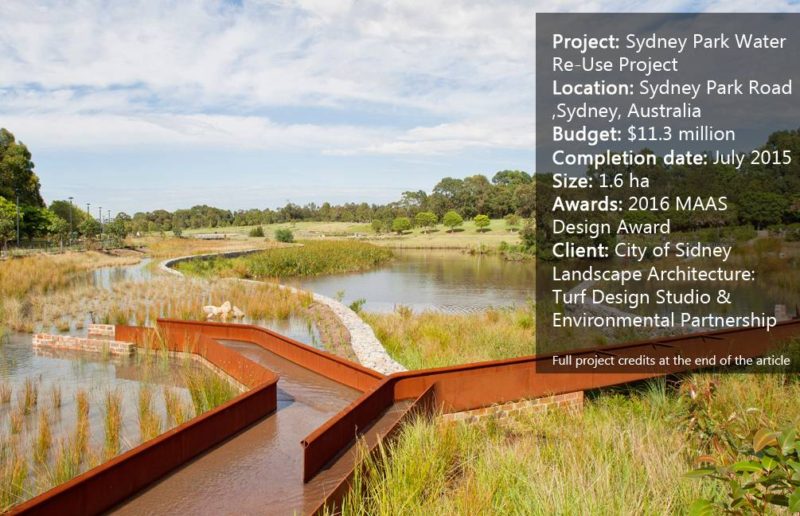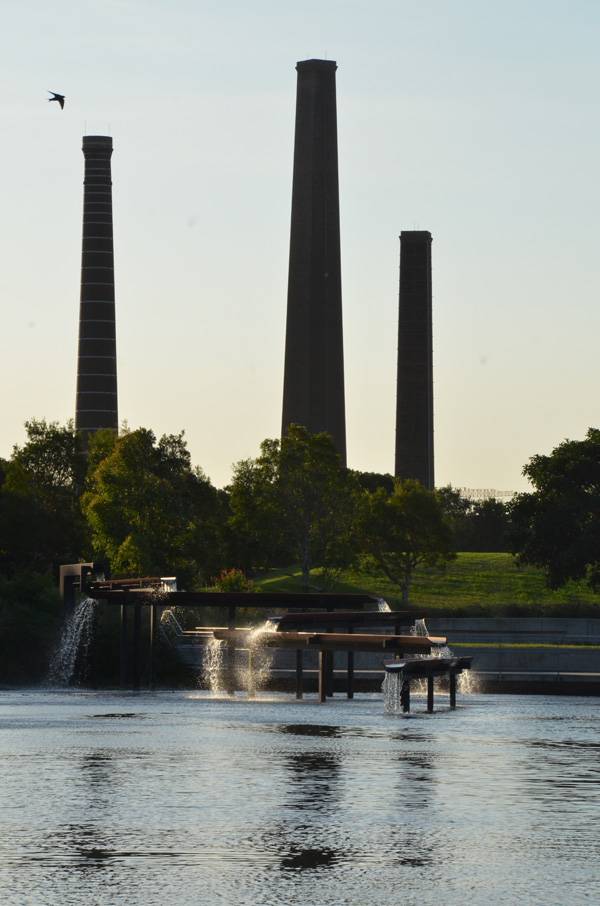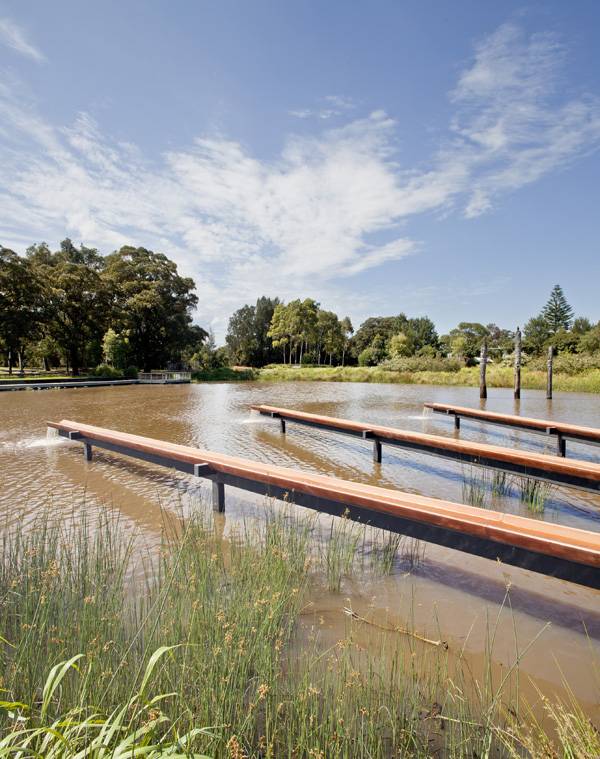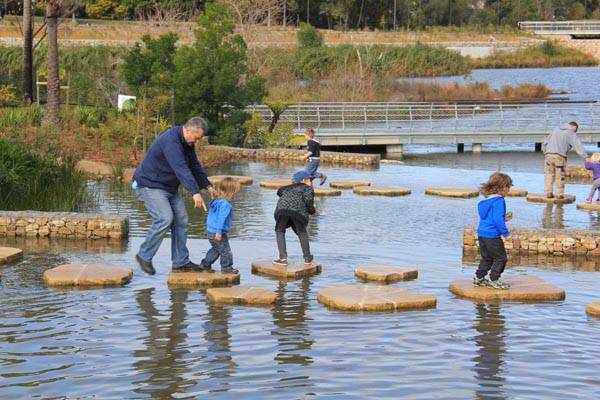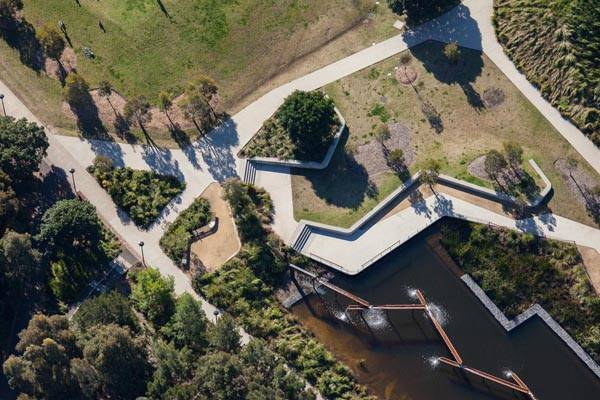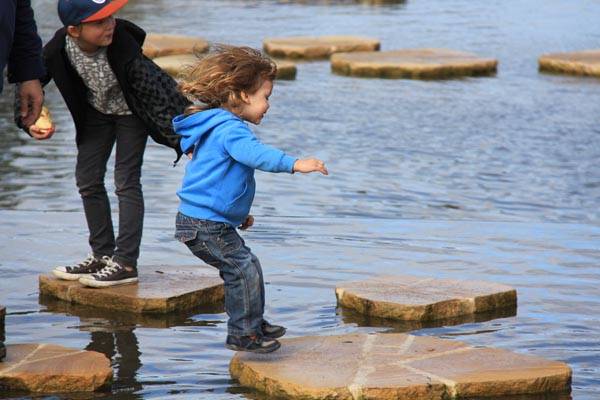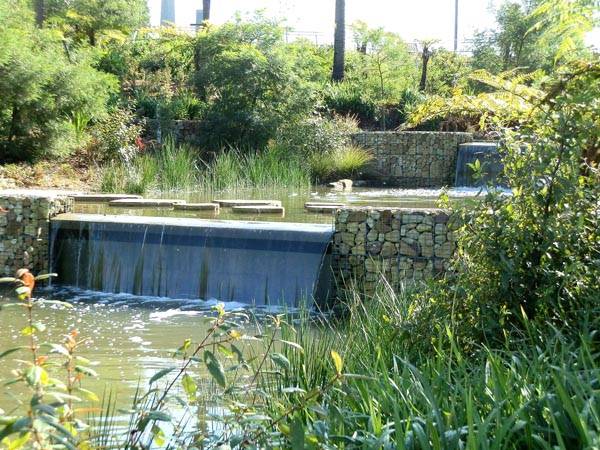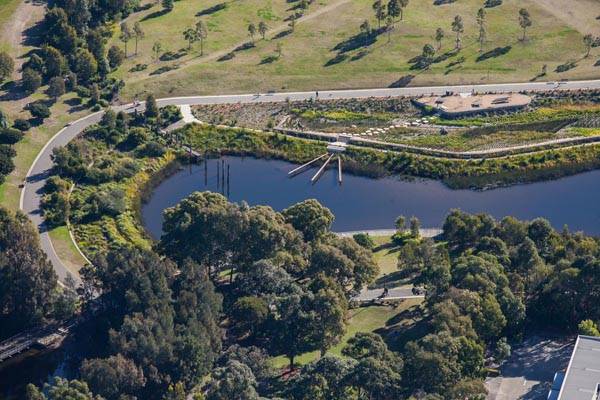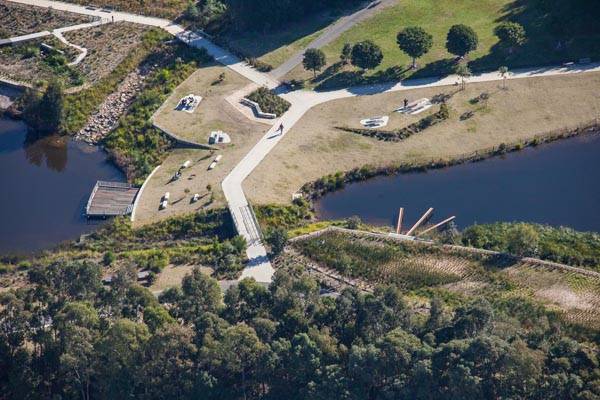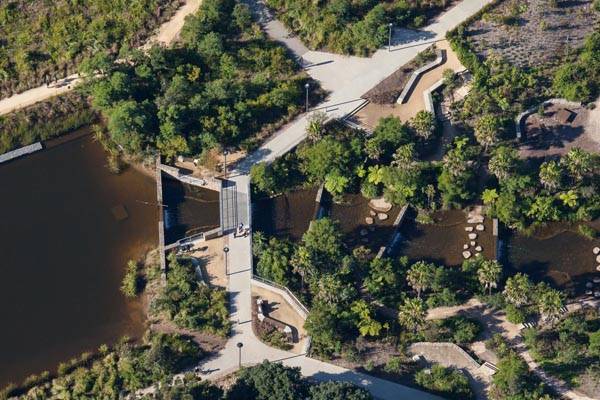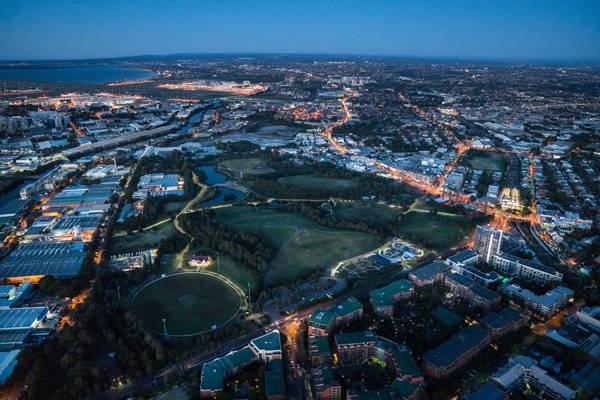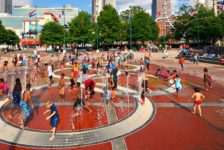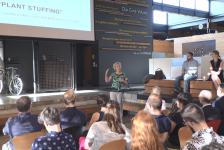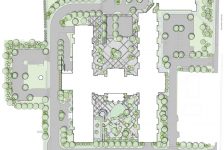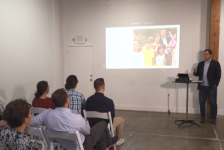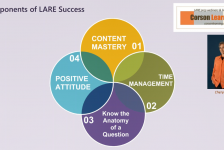Article by Alexandra-Elena Ciocan– A review of the Sydney Park Water Re-Use Project, designed by Turf Design Studio & Environmental Partnership, in Sydney, Australia. Do you want to know how the innovative Sydney Park Water Re-Use Project manages to deliver answers and solutions to the people and the world, while constructing a better, more feasible future? The translation and reinterpretation of what sustainability means have converged in this Australian park, as the result of the teamwork of landscape architecture firm Turf Design Studio and Environmental Partnership (TDEP), along with other specialists.
For most of us, re-use means nothing but recycling plastic bottles or giving new purposes to long-worn household items. We seem to fail to picture the concept on a bigger scale. Can you imagine how your design could benefit from building upon landscape elements as simple and common as water? Your work can create a tremendous impact on the community you live in, by making a lasting change. Isn’t that the aim of landscape designers and enthusiasts?Identify the Distinctive Resource
To begin with, you must know this is not your traditional landscape. The story of its transformation started 20 years ago to convert the waste disposal and brickworks post-industrial landscape into the park we see today. The project created by the previously mentioned landscape architects, with the aid of Alluvium, Turpin + Crawford Studio and Dragonfly Environmental was co-funded by the city of Sydney and the Australian federal government, to be part of the ‘Sustainable Sydney 2030’ program.
What makes this project complex is the use of the site’s element of identity – the water – as means to provide the perceived landscape a dual valence: ; both as an aesthetic symbol and an ecological teacherly force. The resulting waterscape honors the relationship between the community, history and environment. The bio-retention wetlands, counting four landscapes, contribute to moderating and reducing the impact of floods.Present it with Value
In the case of Sydney’s wetland park, the visitor deliberately enters the space in order to relax and admire the scenery, while his surroundings offer passive educational opportunities and evoke the community’s past. The project does not solely serve this scientific purpose of ecological learning. Along with it, the beautification of the environment made possible for new relaxation and playing spaces to be contributed to the community. Moreover, the work aimed to construct and maintain a very diverse habitat for small native animals, such as birds, long-necked turtles and frogs.
Engage by Storytelling
Water’s sequential appearance throughout the landscape creates a sense of continuity and compositional unity. It develops a story about stillness and energy, culminating with an open, happy ending: the possibility for the storm water to be re-used. Different scenes gradually unveil the treatment process, by creating dynamic and serene waterscapes.
The play of obtaining the fresh from the used starts with the water abduction from the city’s Munni Channel, then its diversion through a system of underground pipes. In the end, it is artificially and naturally filtered, by physical screens and plants’ root systems, to meet the quality standards. What is impressive is that the stormwater quantity that flows through this network over a year is the same that would fill about 340 Olympic sized swimming pools. Interaction with the landscape and getting a closer look into the site’s history is possible by following the pathway’s circuitry, which converges in numerous belvedere platforms, piers, and other relaxing areas. Bridges and water steps direct the visitor’s flow, in order for him to intimately explore, participate, and be involved in the way his surroundings originated and are sustained. In order to echo the site’s history, the designers conceived a set of terracotta channels rising above the water level to aerate and circulate the stormwater to the different areas in the park. The local industry identity can also be spotted throughout the park in little details such as brick paving. To fit the project’s eco-friendly concept, the materials used in the park’s design were nature- inspired. The rocks, the gabions to compose the waterfalls, and the wooden benches come together to ground the visitor into the reality of what is encompassing him and its underlying message. The planting scheme was designed to highlight the site’s dimensions with its tall trees. Adding to the intimate feeling stands the multitude of grasses. Low-growing water species, like Cladium sp., enhance the organic curves of the riverbanks while still maintaining the visual open space.Study the Process and Act!
People need to learn about important world matters in a subjective way, by being exposed to real life examples. By enjoying the experience the Sydney Park is offering, we are made aware and we accept responsibility for the environment, without feeling accused.
This is not something many projects accomplish. So if you’ve thought your design cannot succeed to change the world, learn that it can. Just like Turf Design Studio alongside their partners, you just need to identify your landscape’s ‘gold’, furbish it with meaning for the people and be creative about it. It will save your design team money and the world more time. How about you, are you integrating the existent features of a landscape into your project? If so, are you innovating with them in a way to benefit the community?Full Project Credits Sydney Park Water Re-Use Project:
Project Name: Sydney Park Water Re-Use Project Location: Sydney Park Road, St Peters, NSW, 2044, Sydney, Australia Budget: $11.3 million Completion date: July 2015 Size: 1.6 ha Awards: 2016 MAAS Design Award Client: City of Sidney Design Team Landscape Architecture / Lead Consultant: Turf Design Studio & Environmental Partnership (TDEP) Water & Environment: Alluvium Public Art: Turpin + Crawford Studio Ecology: Dragonfly Environmental Contractor: Design Landscapes Plant Suppliers: Andreasens Green, Toolijha Structural Engineer: Partridge Lighting and Electrical: Lighting Art and Science Irrigation: HydroPlan Soils: SESL Australia Environmental Management: A.D. Envirotech Australia Recommended Reading:
- Becoming an Urban Planner: A Guide to Careers in Planning and Urban Design by Michael Bayer
- Sustainable Urbanism: Urban Design With Nature by Douglas Farrs
- eBooks by Landscape Architects Network
Article by Alexandra-Elena Ciocan
Published in Blog

